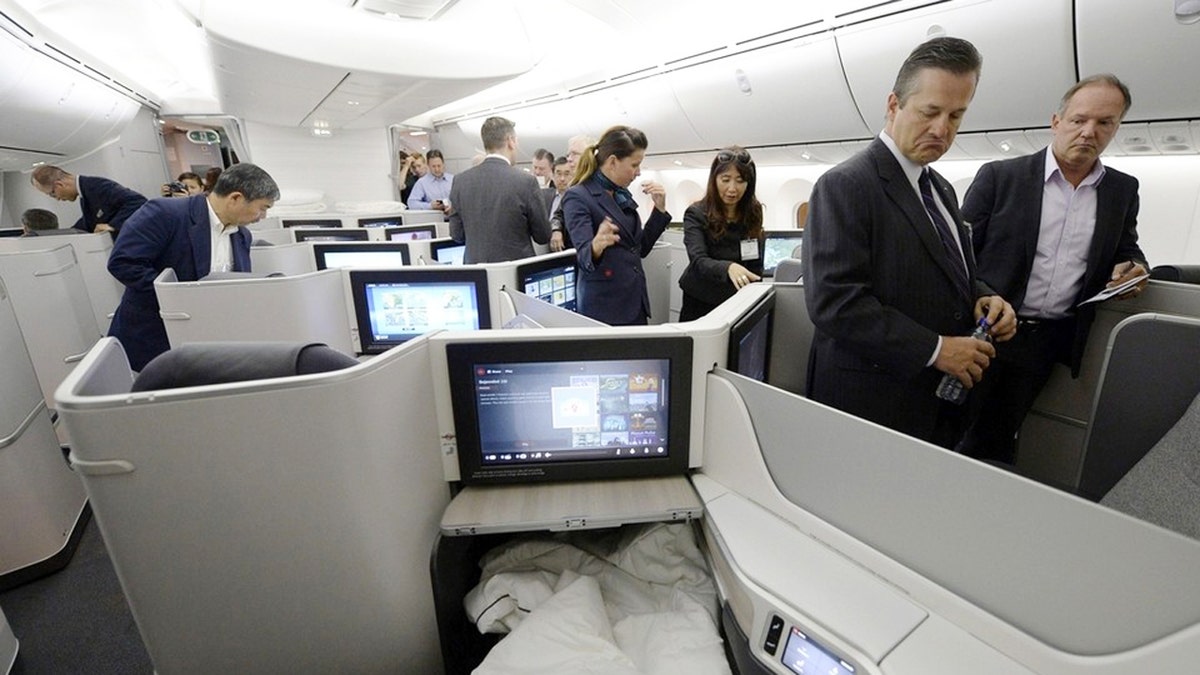
Walking past those cushy first class seats may be fueling incidents of anger in the skies. (Reuters)
When it comes to flying, there have been countless incidents chroncling angry passengers yelling at crew members or squabbling for more legroom.
Flying may bring out the worst in all of us, but why?
You’re not the only one who arrived at the airport two hours early, spent an eternity on the security line, was prodded by a TSA agent and then herded to the middle of the plane only to discover that there was no room for your carry-on.
It turns out that there may be one particular trigger that causes fliers to throw in the towel and give in to supressed feelings of so called "air rage"-- walking through a first class cabin.
According to a new study published Monday in the Proceedings of the National Academy of Sciences, passengers seated in economy class were 3.8 times more likely to have an incident of air rage if they were on a plane that had a first-class section.
And those same travelers were 2.18 times more likely to have an outburst if they had to walk through first class to board the plane, as opposed to boarding in the middle of the plane in their assigned section.
So walking past the comfortably reclining one-percenters sipping on mimosas not only makes us feel inferior, but, according to the study authors, that feeling of inequality can have serious consequences.
"Psychology tells us that when people feel a sense of deprivation and inequality, they are more likely to act out," said Katherine A. DeCelles, associate professor of organizational behavior at the University of Toronto, and Michael I. Norton of the marketing unit at Harvard Business School.
The authors, who reviewed several years’ worth of data on air rage incidents from a large international airline, found that the rate of an air rage incident among first-class passengers was 12 times greater if all passengers boarded in the front and walked through their section to get to the rear, compared with flights that had separate entrances for first class and economy.
"When people from higher social class backgrounds are more aware of their higher status, they are more likely to be antisocial, to have entitled attitudes and to be less compassionate."
Despite making frequent headlines, overall, incidents of inflight anger are very rare. The study found that on average, these incidents occur in economy class just 1.58 times per 1,000 flights, adding up to a total of a few thousand cases of air rage during the several-year period.
But DeCelles says some airline crew members may hesistate to publicize these incidents. Since the FAA doesn't require crew to report air rage incidents, it can be difficiult to track whether they are really on the rise-- or social media just exacerbates the phenonemon.
But are the lucky fliers in first really to blame for the outrageous outbursts?
Michael McCullough, professor of psychology at University of Miami who was not involved with the study, says it's not so black and white.
"There could be another thousand things associated with the presence of first-class seating," McCullough told CNN. He said there could be design features of planes without first class cabins that make all passengers feel less like cattle being herded.
Regardless of the cause, McCullough did call air rage incidents "public hazards" and says carriers should look into how they structure planes.
DeCelles agrees and says airlines should make use of planes' middle doors when possible.
"Most aircraft do have doors in the middle, from what I am told from airline executives," she said. According to the professor, it might not only cut down on angry fliers but make the whole boarding process more efficient.




















